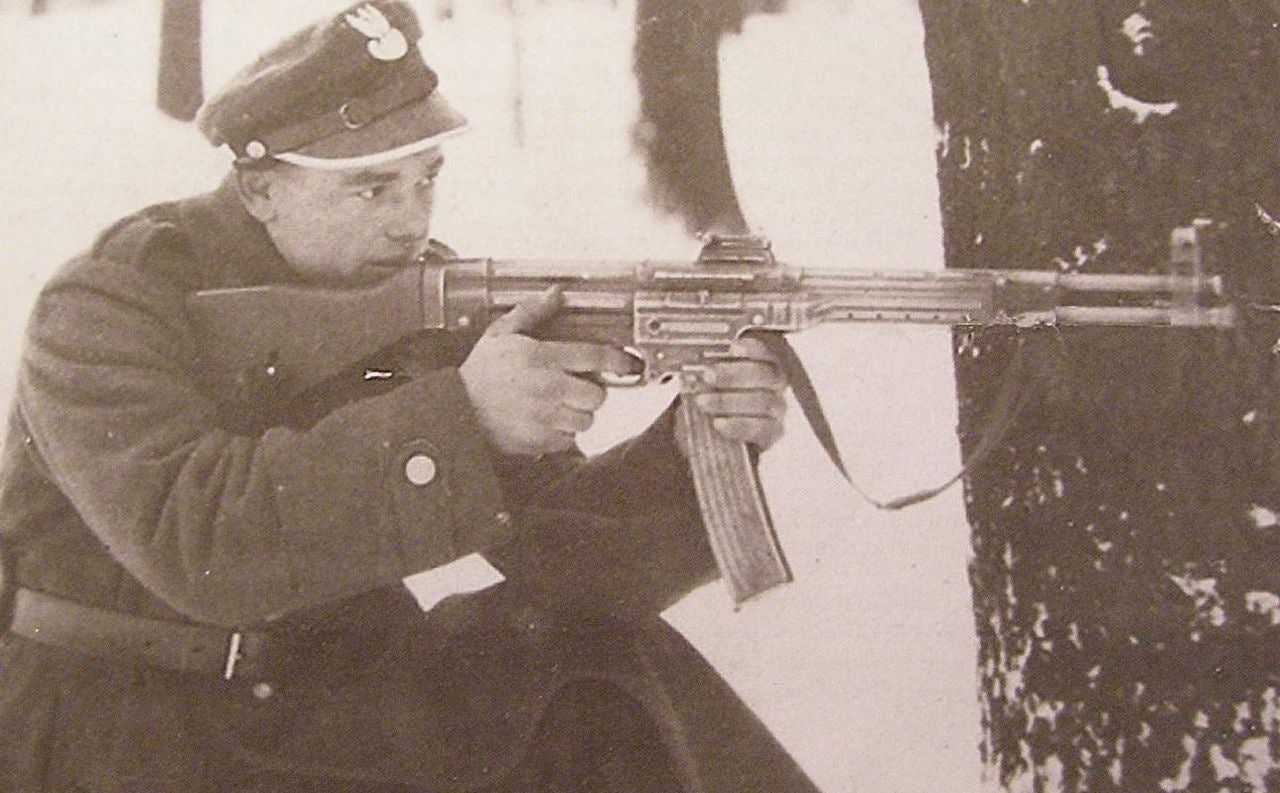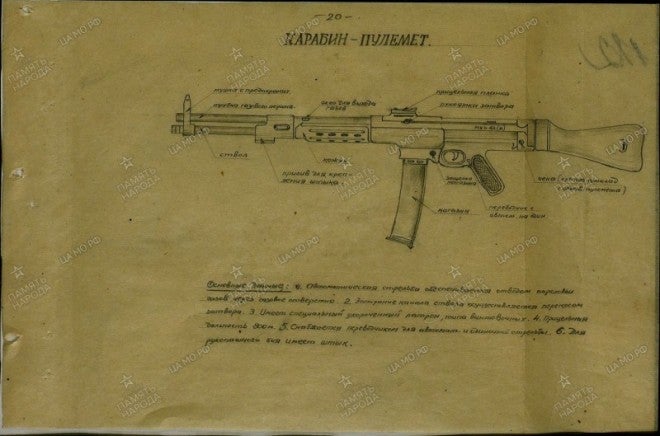In November of last year, we blogged about an early Soviet encounter with the MKb.42(H), the open bolt machine carbine that would become the famous closed bolt MP/StG.44 assault rifle. Ensign Expendable, author of the Soviet Gun Archives blog that provided the material for the previous article, has posted another, probably even earlier source on the Soviet reaction to the weapon:
“Main data:
- Automatic fire provided by gunpowder gases passing through the gas opening.
- The barrel locks via the bolt tilting.
- Uses a special shortened round, similar to the rifle ones.
- Range: up to 800 meters.
- Has a selector for automatic and single-shot fire.
- Equipped with a bayonet for hand to hand combat.”
The intelligence brief reads:“Carbine-machinegun MK-42The model 1942 7.92 mm carbine-machinegun with a 30-36 round special magazine (uses shortened 7.92 mm rifle bullets) is carried on a strap affixed to the stock and across from the bayonet lug. It’s easy to disassemble. Judging by the design, the magazine is also used as a foregrip (there is no sign of an attachable bipod). Externally, the gun is composed of the following parts:
- Barrel
- Front sight with safety
- Gas piston pipe
- Barrel shroud
- Rear sight
- Bolt
- Magazine
- Base with pistol grip and trigger guard
- Stock with an opening for accessories
The striker mechanism of the machinegun-carbine is composed of the following parts:
- Gas piston
- Operating slide
- Bolt base
- Bolt (there is a safety on the bolt plunger and a handle for pulling it back)
The bolt is composed of the following parts:
- Bolt case
- Extractor
- Firing pin
Judging by the design of the cooling system, it can be expected that the rate of fire and automatic qualities of the machinegun-carbine are not high.”
Ensign informs us that he does not have a date for the document, but believes it to be early 1943 from context. He points out that the previous (and most likely later) document makes mention of other MKb.42(H)s being captured by Russian forces before; this document does not make any mention of previous captures.
The MKb.42(H) was a sound weapon, and with the relatively minor modification of moving from open to closed bolt operation in the MP.43 model, the basic design would become one of the most-produced German small arms of the late war. However, their impact on the war was relatively small, both because the importance of small arms was vastly reduced by 1945, and because there were difficulties getting rifles, and especially magazines and ammunition, to the front. Allies who captured German depots found thousands of thousands of rifles, unshipped and unissued; ironically this meant that many of these very serviceable brand-new weapons found their way to the Middle East and other parts of the world, and have subsequently had a long if somewhat obscure post-war service life.

A well-worn MKb.42(H) in the hands of a man, who appears to be a Polish fighter, judging by the crest on his cap. Most likely this picture was taken towards the end of the war, around or after the liberation of Poland. Image source: moddb.com
The MKb.42(H) itself served through the end of the war with German forces.
 Your Privacy Choices
Your Privacy Choices
